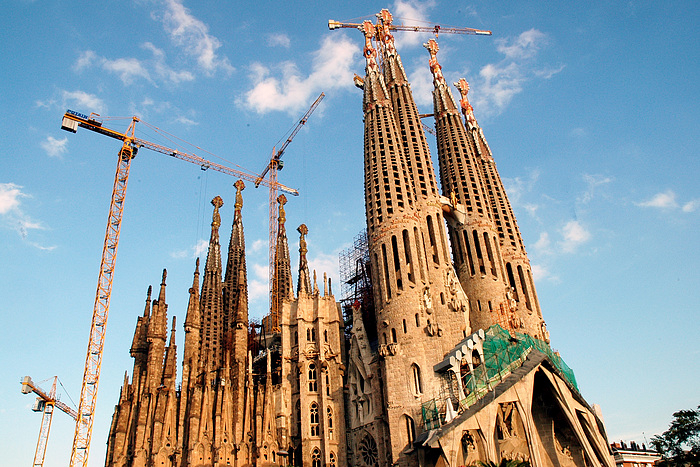Get More From Your Devil’s Advocate
Across all industries, there is a tremendous desire for more innovation. Sadly, companies frequently suffer from a cultural habit that stymies creativity: people play the role of Devil’s advocate in a non-constructive, unidimensional fashion. New ideas face a constant barrage of negativity, and promoting them becomes a Herculean task that discourages but the most intrepid innovator. With a bit of training, this well-meaning but drag-inducing scrutiny can be redirected to identify and strengthen the best new ideas. In this article, let’s define the problem and introduce a few solutions.
An Example
I was recently discussing an issue related to our cultural transformation with colleagues. As I advanced a potential solution, someone barged with “let me play devil’s advocate for a minute”. The person then proceeded to cast F.U.D. upon my idea. I was instantly annoyed: the person hadn’t taken the time to listen to the whole idea nor, seemingly, to consider its merits. Even ignoring the impact this rejection had on my ego and the potential consequences on my future participation, the person was acting as a net brake on forward progress. The transformation issue was no closer to being resolved after that person’s interjection.
Overcoming Inertia
Unfortunately, some people mistakenly believe that the devil’s advocate’s main responsibility is to oppose (mostly with good intent, more on that in a moment, please hold your nose). Because of that, the role often ends up contributing to maintaining the status quo instead of progress.
The most difficult thing about cultural change management is overcoming inertia, skepticism, and opposition. Therefore, input that solely seeks to oppose or dismantle is not tremendously valuable. The universe is great at disassembling things all by itself. Indeed, the 2nd law of thermodynamic states that “that there is a natural tendency of any isolated system to degenerate into a more disordered state”. Mother Nature gives us disorganization for free. She doesn’t need help.
What we need is construction, design, and creativity. These things require action, drive, and energy. And we should expect our Devil’s Advocate to contribute.
Intentional Validation
You can let go of your nose.
To be sure, there are absolutely times when we need to look at reasons why something won’t work. Yes, it is critical to pressure-test the viability of ideas and to identify their riskiest assumptions. This is best done deliberately.
For example, in the space of entrepreneurial ventures, Jim Mullins provides seven domains through which an idea’s killer assumptions can be identified (see his “New Business Road Test” book . The well-known Lean Startup is all about reducing risk through experimentation. And in law, preparing someone to testify requires a similarly purposeful preparation and line of questioning.
In all cases, the pressure testing is calculated, focused, and exhaustive. And it happens *after* the value of the idea has been deemed high enough to warrant such an examination. It’s never mere opposition.
OK, I promised a few approaches. Here they are:
Six Thinking Hats
One of my favorite techniques to avoid the opposition trap is the ‘Six Thinking Hat’ technique. The creator, Edward DeBono, suggests that all conversation participants simultaneously look at the issue through a common but rotating lens.
For example, all undisputable facts about the issue are listed when participants figuratively wear the white hat. No room for opinions. After switching to the yellow hat, everyone chimes in with the value and benefits they see in the idea. Eventually, all participants are asked to wear the black hat of judgment, which enables them to rattle off all the pitfalls of the idea. And so on for the other hats. At the end of the process, everyone is assured that all sides of an idea were thoroughly explored.
Design Thinking
The Design Thinking method includes a similar form of lateral thinking . It encourages interlocutors to reply to an idea in the form of: “I like, I like, I wish”. For example:
Jack: “We should hire an Agile coach for every team”
Jill: “I like how this would accelerate the transformation. I also like how it would make expertise available to all those who want it. I wish we could validate the model before making such a large commitment.”
Participants have to acknowledge the valuable aspects of an idea before highlighting a risk, and then only in the form of a problem to solve. It’s very constructive.
Improvisational Comedy
To enhance collaboration, many entrepreneurs are borrowing a technique from improvisational comedy known as “Yes, and…” Seth Stevenson describes it as:
When they’re collaborating onstage, improv performers never reject one another’s ideas—they say “yes, and” to accept and build upon each new contribution. “It’s a total philosophy of creativity,” says Mandel. “ ‘Yes, and’ creates, while ‘no’ stops the flow.”
The method strengthens ideas, rewards listening skills and avoids the pitfall of a ‘no’ culture. With many people having a hand in the creation of the idea, the downsides and risks can be explored without fearing to choke the idea to death.
Owning Forward Motion
Each method explored above includes an affirmative responsibility to look at the potential of an idea prior to any pressure testing taking place. This ensures that forward motion is preserved.
Once demotivated by careless rejection, most people cannot muster the activation energy required to carry their ideas forward. It is imperative that we remind each other that we are mini-CEO’s, each tasked with bettering the current state of affairs. The Six Hats, Design Thinking’s “I like, I like, I wish”, and “Yes, and…” are simple but effective tools with which we can get more from our Devil’s Advocate. Have you experienced others methods to achieve the same goal? Have you discovered immunity to this problem?





